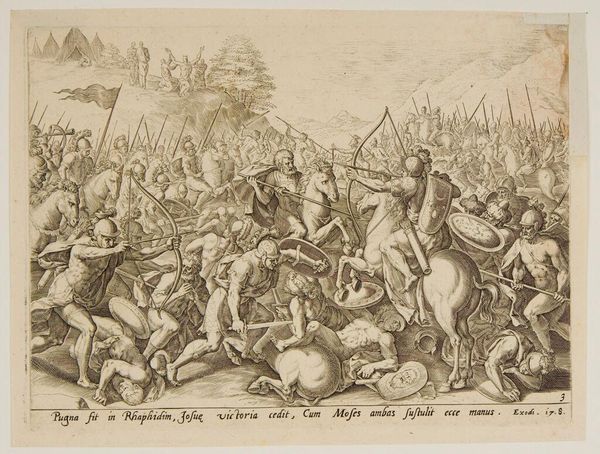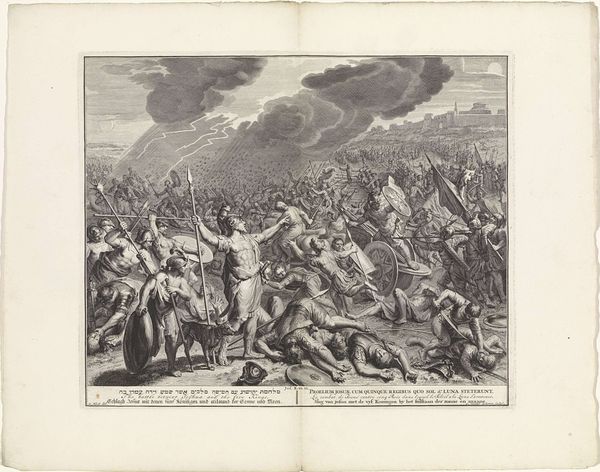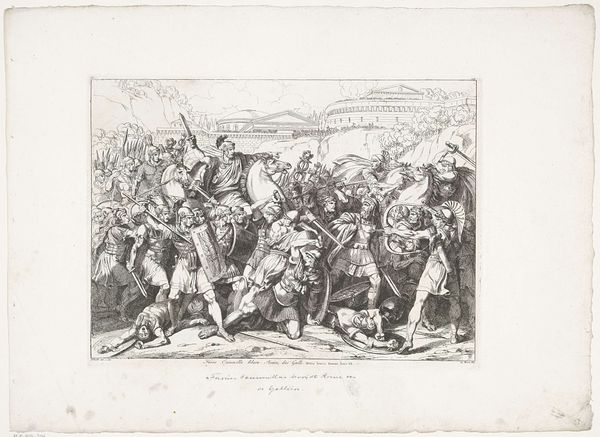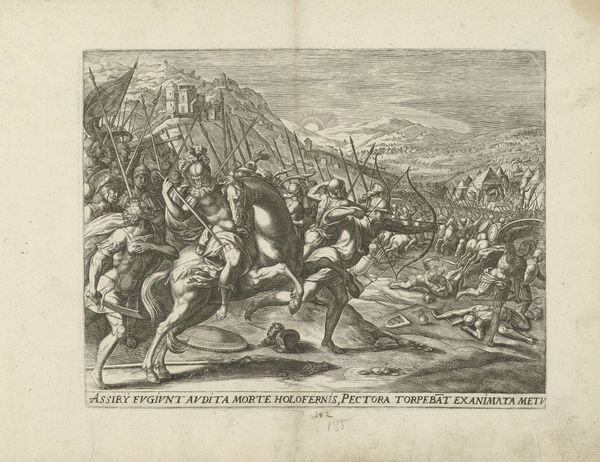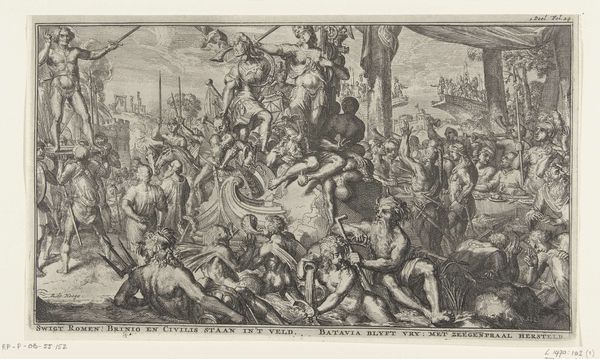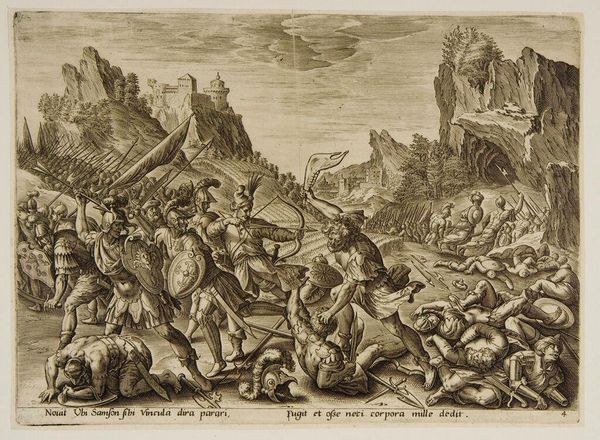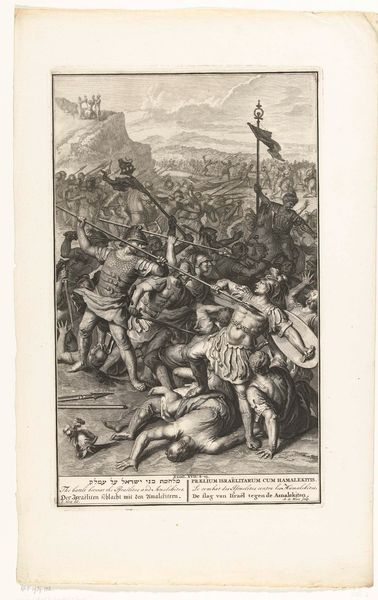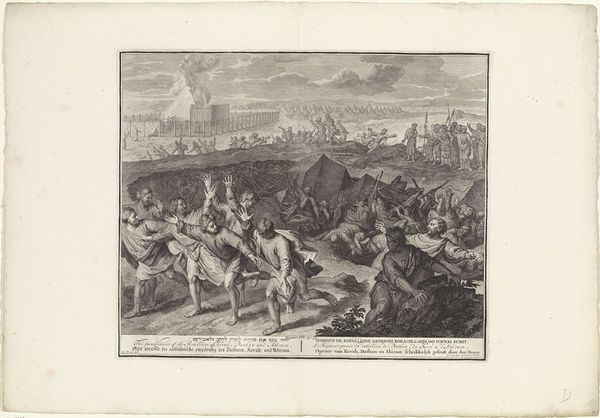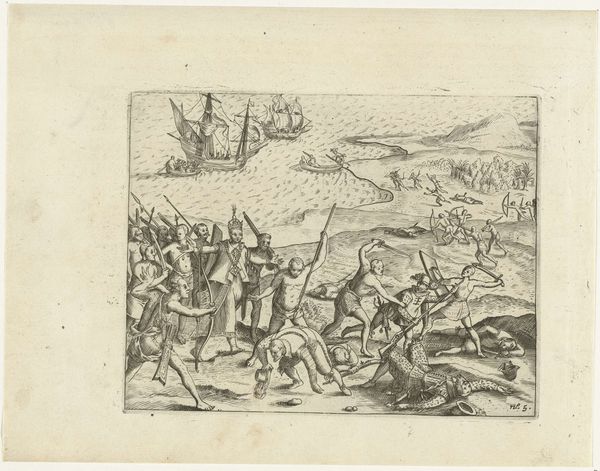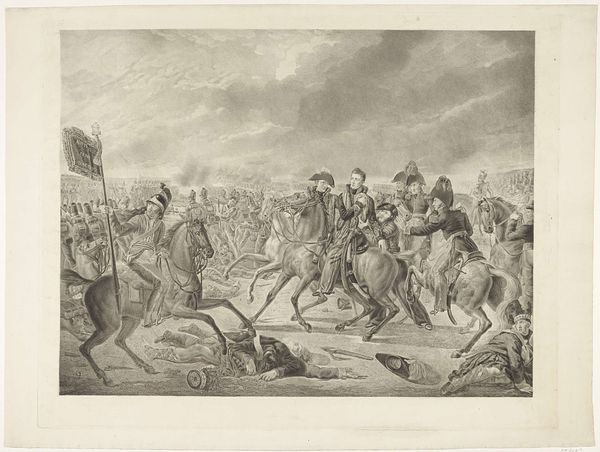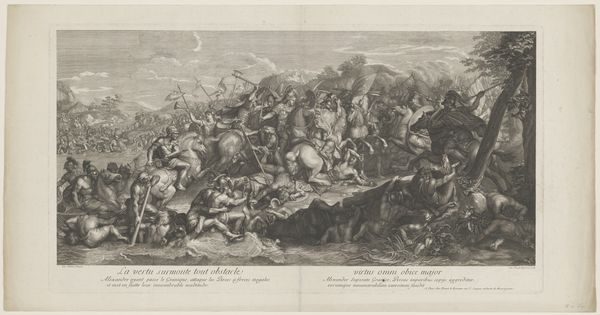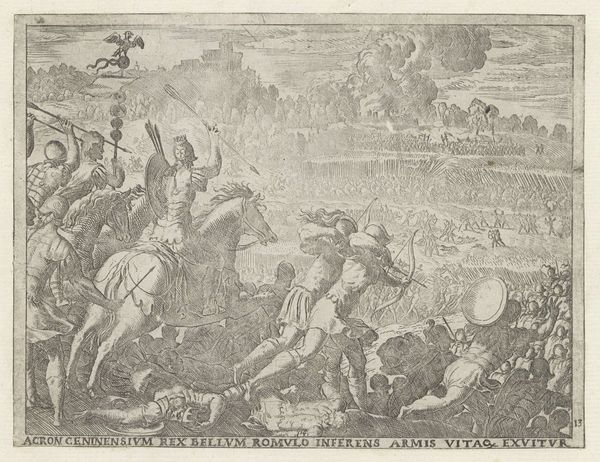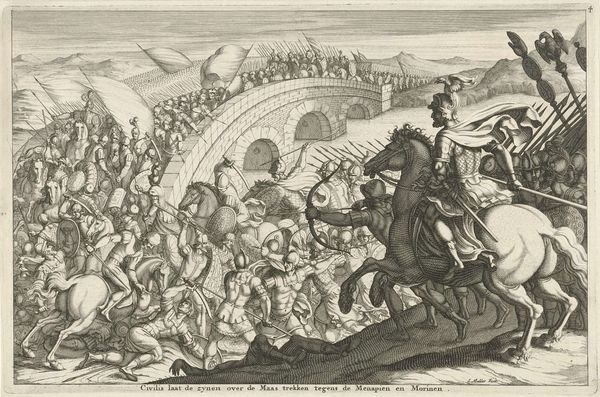
print, engraving
#
narrative-art
#
baroque
# print
#
figuration
#
history-painting
#
engraving
Dimensions: height 191 mm, width 257 mm
Copyright: Rijks Museum: Open Domain
Curator: Johann Sadeler's "War with the Amalekites," dating sometime between 1579 and 1643. What is your initial take on this busy print? Editor: My first impression is one of intense chaos and energetic movement. The composition feels quite dynamic, perhaps even a bit overwhelming with all those figures crammed together. Curator: The crowding definitely speaks to the baroque sensibilities, wouldn’t you agree? It amplifies the emotional impact of a grand biblical battle. Formally, Sadeler employs dramatic contrasts in light and shadow, typical for engravings of that era, to heighten the tension. Note how linear precision conveys the intensity of action—every sword, shield, and grimace seems sharply defined. Editor: Absolutely. The contrast certainly emphasizes the symbols—armor, weapons, and gestures—associated with war and divine intervention, the last of which can be seen atop that distant mountain. Consider also the recurring symbol of the raised arms in Abrahamic religions; here, we see Moses having to hold his hands up in prayer for Joshua to succeed. How intriguing that divine favor in warfare is so contingent and mediated. Curator: Precisely! It all relates to the iconography, and in this historical rendering, the battle's participants signify the power of faith and its tangible effects. Joshua at center also represents the steadfast military leader, and his raised sword carries echoes of triumph but also duty. Editor: Speaking of which, do you also note how some details and arrangements are rather anachronistic, or more consistent with the wars from the artist's time than what might be described in Exodus? I would even say, with all the different kinds of conflict and combatants through history, one would never imagine God consistently taking one particular side—much less showing that preference through victory in warfare. Curator: Well, such representations are products of their socio-cultural context. Perhaps it would serve us well to look further into that and consider more about their implications, given the amount of detail that this print presents us. Editor: It certainly gives me food for thought in terms of interpreting history through iconography. It makes me consider all the artwork that, regardless of era or style, communicates cultural narratives and the evolution of visual motifs.
Comments
No comments
Be the first to comment and join the conversation on the ultimate creative platform.
